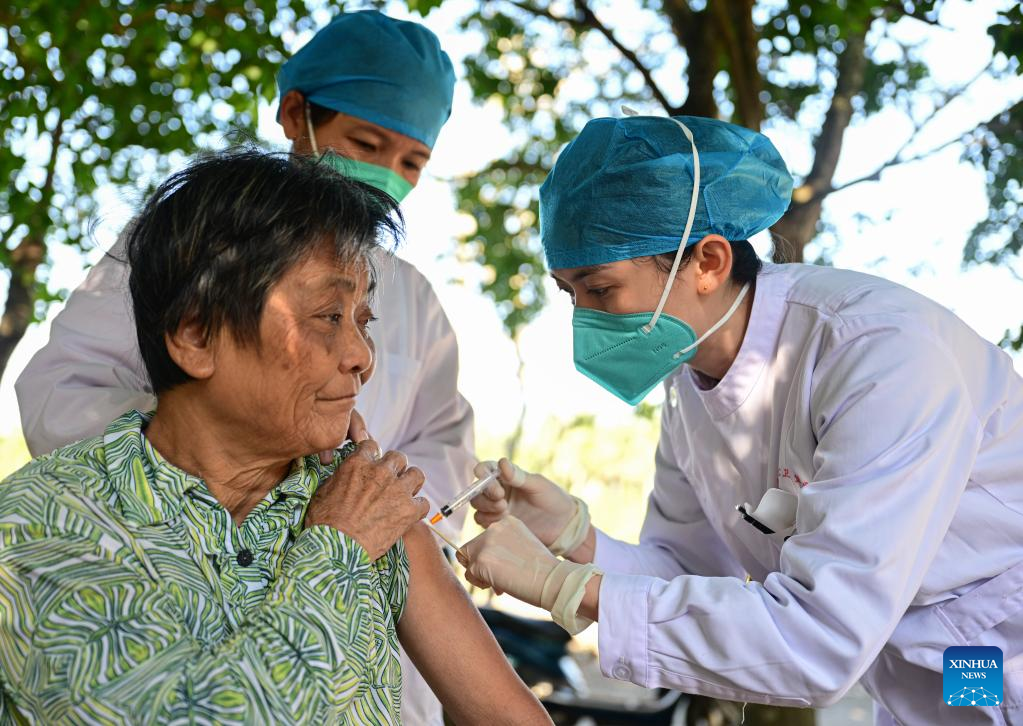Successful COVID fight sets example


Populous nations can learn from China's experience during pandemic
China, with one-fifth of the global population, triumphantly exited the three-year COVID-19 pandemic with the lowest cost in terms of human life, setting a good example for other populous countries, experts said.
Based on the success, Chinese policymakers, in retrospect, are proposing wide-ranging reforms aimed at consolidating the country's public health system.
Legislative suggestions on that front have become trending topics during the annual two sessions — the meetings of the National People's Congress and the Chinese People's Political Consultative Conference National Committee.
The top legislature and the political advisory body are currently meeting in Beijing.
The spread of the disease has "basically ended" among the country's 1.4 billion people, with only smaller, sporadic infections still occurring, Liang Wannian, head of the National Health Commission's expert panel on the response to COVID-19, said at a closely watched news conference last month.
He said China has blazed a trail showing how countries with a sizable population can evade a major pandemic.
The comments came after a "major, decisive victory" in the fight against the disease was declared on Feb 16 at a key meeting of the Communist Party of China.
Presided over by Xi Jinping, general secretary of the CPC Central Committee, the meeting agreed that China has created a miracle in the history of human civilization for a country with a vast population to successfully prevail over a pandemic.
Speaking at the news conference held by the State Council's Joint Prevention and Control Mechanism, the country's COVID-19 task force, NHC spokesman Mi Feng said the Omicron-fueled outbreak — which had led to a spike in locally transmitted cases nationwide from November — has subsided and turned out for the better.
He said the past three years have witnessed the constant fine-tuning of China's COVID strategy, including the downgrading of the management of the disease in January in light of the virus' decreasing virulence.
The dynamic adjustment has helped strike a balance between disease control and economic growth, and worked to check the spread of the more lethal lineages of the novel coronavirus earlier.
"It effectively protected people's lives and health," Mi said.
Official figures showed that since November, China has treated 200 million infected patients, including nearly 800,000 critically ill patients, and that the death rate from COVID-19 has remained at the lowest level in the world.
According to the National Health Commission in July, China's average life expectancy continued to rise amid the pandemic, from 77.93 years in 2020 to 78.2 years in 2021.
Meanwhile, average life expectancy in the United States — home to an advanced health system — fell over the same period from 77 years in 2020 to 76.1 years in 2021, according to the National Center for Health Statistics, which is part of the country's Centers for Disease Control and Prevention.
The total number of COVID-related deaths in the US had reached 1.1 million by January, according to the CDC.
China's regularly modified COVID-19 diagnosis and treatment plans, which offer guidance to front-line medics, were the secret to underpinning China's success in saving lives, experts said.
China has introduced 10 such plans and four plans for treating COVID patients in critical condition over the course of three years.
Speaking at a news conference on Feb 27, Guo Yanhong, director of the NHC's health emergency division, said the evolving plans informed doctors of what parameters to track in patients so that doctors can intervene earlier and prevent them from descending into life-threatening conditions.
She said the plans represented increasing understanding of the virus, including its symptoms, virulence and modes of transmission. More recent plans have advocated a number of effective treatments, such as blood plasma taken from patients that have recovered, and newly approved antiviral drugs.
"The plans were adjusted according to increasing knowledge of the virus," Guo said.
China kept its border controls in place until January. By this time, the dominant Omicron subvariants were much less deadly than their predecessors, and more than 90 percent of the Chinese people had been vaccinated.
The combined factors have laid foundations for China's economy, which slowed during pandemic-triggered lockdowns, to rebound faster than many Western observers had expected.
The National Bureau of Statistics said on March 1 that a gauge of manufacturing rose at the fastest pace in more than a decade in February, while export orders expanded. Services and construction activity also expanded further.
On the back of China's achievements, the virus also exposed some of the long-running shortcomings in the country's emerging public health system. They have gained the attention of multiple NPC deputies and members of the CPPCC National Committee this year.
Li Yan, a national lawmaker and chief executive officer of Qilu Pharmaceutical, a private drugmaker in Jinan, Shandong province, said that the sudden outbreak of COVID-19 in Wuhan, Hubei province in late 2019 had temporarily fallen into a shortage of medics and overstretched hospitals.
To address the problem, authorities mobilized medics and resources in non-affected regions to help out in hard-hit cities, which had effectively worked but should not be the "lasting solution", she said in an interview with the Economic Observer newspaper.
Li suggested that authorities build a public health service network with multiple community-based outposts, which are tasked with detecting and reporting infectious diseases, in the hope of nipping any potential outbreak in the bud.
Zhu Tao, a political adviser behind China's first single-dose adenovirus vaccine for COVID-19, said vaccines have become the central pillar of China's COVID control now that many pandemic restrictions have been eliminated.
"Vaccines are the cheapest option for society as a whole, and have the minimum impact on the economy compared with other options," he told China Youth Daily.
Zhu, who works for CanSino Biologics and led the research on the company's messenger RNA COVID vaccine, which is now under clinical trial, suggested that efforts be made to standardize the emergency use of medications and more so that China can better cope with future public health emergencies.
lilei@chinadaily.com.cn
- Autumn sunset paints Inner Mongolia's grasslands gold
- Sanya forum focuses on tourism security cooperation
- Ninety-four students hospitalized with gastrointestinal discomfort in Guangdong
- Baoding Natural History Museum draws crowds
- China tests moon-mission rocket
- Remains of 30 CPV martyrs return home after 75 years




































